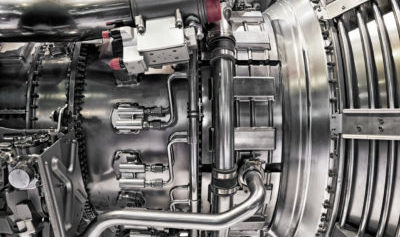What is Laser Ablation and How Is It Used in Aerospace Manufacturing?

Aerospace manufacturers use laser ablation to remove layers from solid metals and certain compounds to make those materials more suitable for industrial processes. Laser ablation offers absolute precision to carry out this task.
How Laser Ablation Works
A laser beam is focused on the metal’s surface. This breaks off existing chemical bonds that bind the material to be removed. The application of the beam burns off the material and vaporizes it.
Pulse fiber lasers are most often used to accomplish this process because of their high intensity. Their higher brightness is very effective and doesn’t require high levels of energy. Pulsed lasers operate at frequencies up to 4MHz and need only 110-240v.
Laser Ablation in Aerospace
Aircraft manufacturers rely on adhesive bonds to simplify design and to improve performance. Composite content of aircraft has increased and, as a result, metal to composite bonds are becoming more common. Replacing these joints with adhesive bonds reduces weight, simplifies manufacturing, and provides more reliable joints.
In order to form secure adhesive bonds, proper material surface preparation methods must be used. The laser ablation process delivers thorough results when preparing a surface. It also results in a highly reproducible topography. This allows for a consistent application of adhesive and a predictable bond.
Laser Ablation and Thermal Barrier Coatings
Thermal coatings are important to aerospace operations. They help to significantly reduce temperatures of the aircraft components. And due to this protective coating, it’s possible to increase the process temperatures and the efficiency of the operations.
The fiber laser ablation process allows drilling on delicate and heat-sensitive materials. It removes material so quickly that the surrounding area isn’t impacted by the process. This is especially important with airplane engines where precision is required so that engines can operate at high-performance levels and reduce fuel consumption.
Benefits of Laser Ablation
Thanks to advancements in fiber laser technology, the process can be performed with extremely high accuracy, precision, and efficiency.
Minimal Heat Transfer
The lasers used in laser ablation deliver a high level of intensity, but very little heat is transferred to the surrounding area. The beam can be focused to remove as much or as little material as required without causing damage to the rest of the component.
Cost
Traditional methods require a multi-step approach. A pattern must be created for the area that must be removed and then multiple applications of chemicals are required. This often requires more expensive labor and materials.
Environmental Impact
Laser ablation also provides alternative “greener” means of surface preparation as the use of toxic chemicals and grit blast media aren’t required. It is also much gentler than techniques such as dry-ice blasting. This makes it the ideal choice for a wide range of materials, such as metals, ceramics, and plastics.
For help with your challenging aerospace manufacturing application, speak with the robotic integration aviation, space and defense specialists at Genesis Systems, an IPG Company.
Posted in Laser Ablation